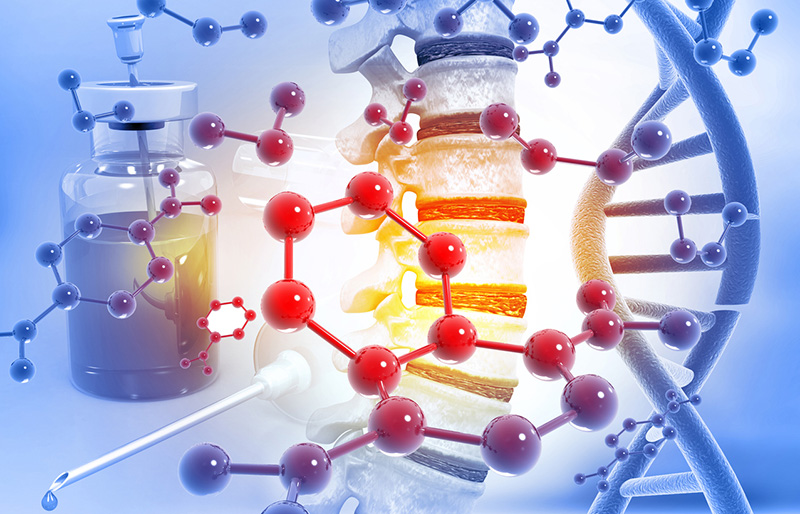Back pain is a widespread issue affecting millions, but have you ever wondered why some people seem more prone to it than others? While lifestyle factors like posture, physical activity, and injury play significant roles, genetics also plays a substantial part. Just as different breeds of dogs are built for specific activities based on their genetic makeup—whether it’s pulling a sled, racing, or simply being a lap dog—humans have genetic traits that affect how their spines are built and function. Understanding these genetic factors can be key to managing and even preventing back pain.
Genetic Factors That Predispose Individuals to Back Problems
Just like dogs are bred for specific roles based on their physical traits, human spines come in various “designs” largely influenced by genetics. Some spines are optimized for flexibility and twisting, while others are built for compression. For instance, a golfer’s slim, flexible torso is well-suited for rotational movements, while a football linebacker’s wide, solid torso is designed for bearing heavy loads. Our genes determine these differences in spine structure and play a significant role in what kinds of stress our spines can handle.
A spine built primarily for twisting may be more vulnerable to compression-based injuries, whereas a spine designed for bearing heavy loads may be more susceptible to damage from twisting. This is a clear example of how the structure of our spines—shaped by genetics—can determine the types of strain we’re more likely to experience.

Common Hereditary Conditions Affecting the Spine
Your genetic blueprint doesn’t just influence the overall build of your spine; it also determines specific structural details that affect how your spine handles stress. Here are a few key examples:
- Size of the Vertebrae:
Some people have slender vertebrae, while others have thicker ones. A slender spine can flex and bend with ease but is more prone to injury under heavy loads. Conversely, a thicker spine can withstand more vertical compression but may crack under frequent bending and twisting. - Shape of the Discs:
Spinal discs vary in shape from person to person. Some have oval-shaped discs, which distribute stress more evenly, while others have heart-like, limacon-shaped discs that concentrate stress in specific areas. The shape of your discs can influence whether they are more vulnerable to bending or twisting injuries. - Shape of the Facet Joints:
Facet joints are the bony projections that connect vertebrae. Their orientation varies among individuals. Some people have facet joints angled from front to back, which allows for smooth forward and backward bending but limits twisting. Others have side-to-side angled joints, making twisting easier but forward and backward bending more stressful. - Hip Joint Depth:
The depth of the hip socket, influenced by genetics, also plays a role in back pain. Deeper hip joints limit forward bending, placing more strain on the spine during activities like lifting or bending over. Shallow hip sockets allow for greater hip flexibility, reducing the load on the spine.
Using Your Spine According to Its Design to Prevent Back Pain
A well-known biomechanics researcher once said, “Genetics loads the gun, but exposure pulls the trigger.” This means that while genetics determine the structure of your spine, it’s the specific stresses and loads you expose it to that lead to injury. Simply put, knowing the strengths and vulnerabilities of your spine’s design can help you manage the types of movements and loads it’s exposed to, thereby reducing your risk of back pain.
For example, if you have a spine better suited for twisting but less capable of handling compression, it’s wise to avoid exercises like heavy squats or deadlifts. On the other hand, if your spine is built for compression but less adaptable to twisting, you should be cautious with activities like golf or tennis.
The key to preventing back pain is to understand your unique spinal structure, identify the types of movements it’s less suited for, and adjust your activities accordingly. Just because someone else can perform thousands of sit-ups without issue doesn’t mean your spine can handle the same stress. Tailoring your movements and exercises to match your spinal design can go a long way in maintaining back health.
Conclusion
Genetics plays a crucial role in the development and structure of your spine, influencing its susceptibility to different types of strain. By understanding how your spine is built and what kinds of loads it’s more or less capable of handling, you can make better decisions that help prevent back pain. While you can’t change your genetic makeup, you can manage the risks by aligning your activities with your spine’s natural strengths. Ultimately, knowing your genetic predispositions allows you to work with your body’s design rather than against it—helping you maintain a pain-free back.


